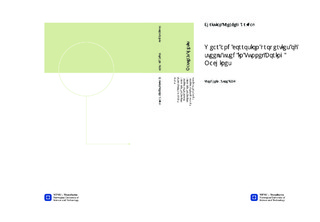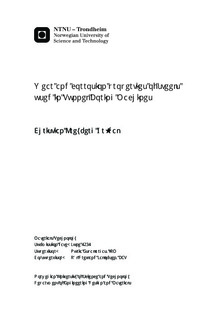| dc.contributor.advisor | Espallargas, Nuria | nb_NO |
| dc.contributor.advisor | Jakobsen, Pål Drevland | nb_NO |
| dc.contributor.author | Grødal, Christian Kreyberg | nb_NO |
| dc.date.accessioned | 2014-12-19T12:28:11Z | |
| dc.date.available | 2014-12-19T12:28:11Z | |
| dc.date.created | 2012-11-10 | nb_NO |
| dc.date.issued | 2012 | nb_NO |
| dc.identifier | 566939 | nb_NO |
| dc.identifier | ntnudaim:7362 | nb_NO |
| dc.identifier.uri | http://hdl.handle.net/11250/241677 | |
| dc.description.abstract | In this master thesis experiments were conducted to determine the abrasion-corrosion properties of a steel designed for TBM tunnelling. This was done by three different tests, reciprocal ball-on-plate, rubber wheel and hyperbaric soil abrasion test. The reciprocal tests were done by rubbing steel balls onto rock obtained from a tunnel boring site in the Faroe Islands. The test were performed in dry conditions, in water from the same site as rock and a mixture of the water and a foam designed for use in hard rock tunnel boring. During these tests no measurable weight loss was produced, but the water and the foam caused some pitting to occur on the steel surface. The water and foam also provided some lubrication, where the foam clearly was the best lubricant by producing elastohydrodynamic lubrication (EHL). The rubber wheel tests were performed in different combinations of water, sand, oil and a foam specially designed for soft ground tunnel boring. The sands used were sand used for making casting moulds and sand obtained from a soft ground tunnel boring site in Israel. The two different water samples used were obtained from the site in the Faroe Islands mentioned above and the previous mentioned Israel site. The tests showed that adding foam to the sand and water mixture significantly reduced the measured weight loss. However, as for the reciprocal ball-on-plate test, the foam caused pitting to occur. The same corrosion effect was observed for the oil additive, but the oil did not provide enough lubrication to avoid abrasive wear. Consequently, the test with the oil additive produced the biggest weight loss of all the rubber wheel tests. The hyperbaric soil abrasion tests were performed in the sand obtained at the site in Israel. The sand was tested both dry and saturated with water from Israel. Tests showed that the measured weight loss from these two tests was similar. However, SEM pictures revealed that in the test with sand saturated with water, both abrasion and corrosion had occurred. While in the dry sand, only abrasion had occurred. This indicates that in this test the hardness of the steel and abrasiveness of the sand is more decisive for the weight loss than the corrosivity of the solution. | nb_NO |
| dc.language | eng | nb_NO |
| dc.publisher | Institutt for produktutvikling og materialer | nb_NO |
| dc.subject | ntnudaim:7362 | no_NO |
| dc.subject | MIMT Materialteknologi | no_NO |
| dc.subject | Materialutvikling og -bruk | no_NO |
| dc.title | Wear and corrosion properties of steels used in Tunnel Boring Machines | nb_NO |
| dc.type | Master thesis | nb_NO |
| dc.source.pagenumber | 65 | nb_NO |
| dc.contributor.department | Norges teknisk-naturvitenskapelige universitet, Fakultet for ingeniørvitenskap og teknologi, Institutt for produktutvikling og materialer | nb_NO |

